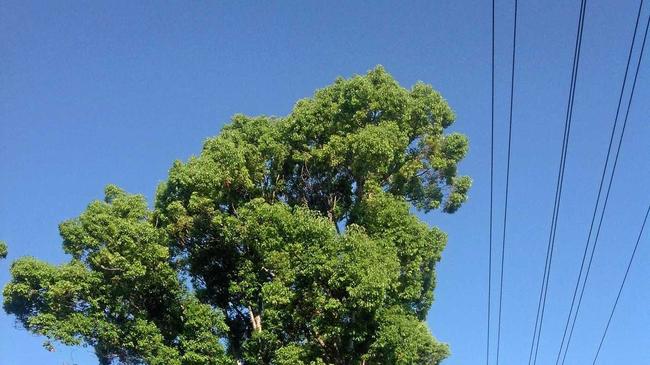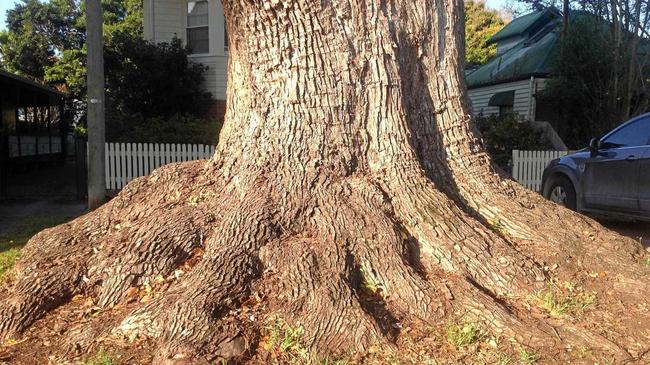CAMPHOR LAUREL: The elephant in the room
The camphor laurel species is highly invasive, aggressively replacing pasture and native vegetation

Chinchilla
Don't miss out on the headlines from Chinchilla. Followed categories will be added to My News.
The elephant in the room, the feral in the forest, the weed in the street. What am I writing about? Cinnamomum camphora, from the family Lauraceae, better known as Camphor Laurel.
Do they have any good points? Yes. If left to grow, unpruned and unpollarded, a camphor laurel becomes a most attractive tree up to 100 feet in height and with a dense crown. It can live up to 500 years. The 420 specimens growing here in Grafton contribute to the shady, leafy appearance of the city. Their bright green new leaf of Springtime is attractive. Their seeds feed birds. Their timber is very desirable for furniture making. Camphor oil is used as an insect repellant, as a component of incense, as a culinary spice and in medicines.
What then is the problem? Why is it declared a Noxious weed, class 4, in South Africa, NSW and Queensland? Where did it come from and why is it here?
This species is a native of Taiwan, Japan, Vietnam and parts of China. Introduced into Australia in 1822 it was actively promoted over many years as a shade tree in streets, school playgrounds, cemeteries, parks and in agricultural areas up to the 1960s. Charles Moore, Director of the Botanic Gardens in Sydney, was among the guilty. He sent the specimens to Grafton. They thrived. What a disaster this has proved to be!
The camphor laurel species is highly invasive, aggressively replacing pasture and native vegetation, including Blue Gums, a prime Koala habitat and food source. Suckers reproduce readily when older trees are poisoned, damaged or cut down without removing the massive root system.
It has a massive seed drop, up to 100,000 seeds annually for a mature specimen. These seeds, green then maturing to black, are bird-attracting and the birds, currawongs, magpies, figbirds, olive-backed orioles, blue-faced honeyeaters, black-faced cuckoo shrikes and flock pigeons, spread those seeds which germinate more readily after ingestion by birds. As well, available feed has increased the numbers of currawongs to the detriment of smaller birds, their prey.
Numbering 420 in our streets and parks and numerically second only to the jacaranda, the camphor laurel is easily identified by most Graftonians. Its bark is grey-brown, rough and fissured when mature. Its glossy leaves, bright green in their present newness are aromatic, smelling of camphor when crushed as does the raw timber. Its flowers are small, white and rarely noticed.
Loggers and farmers carried out widespread clearing which laid waste over 90% of the native forests on this North Coast in the second half of the 19th and into the 20th centuries. Then the camphor laurel, actively planted for shade on farms multiplied. Check out Cowper district.

It invaded disturbed riparian systems and spread along streams where it can totally dominate the riparian habitat. Witness the Orara River near Glenreagh. Toxins and seeds falling in the water can poison fishlings. It inhibits regrowth of native vegetation even after removal. In town such trees create problems with power lines, drains and structures.
The species is not a weed in its native lands. Natural predators have built up over thousands of years. These have created a natural balance. Harvesting has been maintained over the centuries.
In Australia there are few predators. Biological controls do not seem to exist and after the cane toad disaster scientists must be very wary of introducing anything.
In Grafton physical removal would cost at least $4000 a tree. Multiply that by 420 and the answer is an increase in rates. Again. A gradual elimination, perhaps 6 to 10 a year, would be a beginning and an economic possibility. The gaps could be replaced with local native species supplementing what we already have and providing for the future.
Be brave Council. Be aware citizens. Keep watch for the weed in the street and the streets elephant in the room.
Originally published as CAMPHOR LAUREL: The elephant in the room


